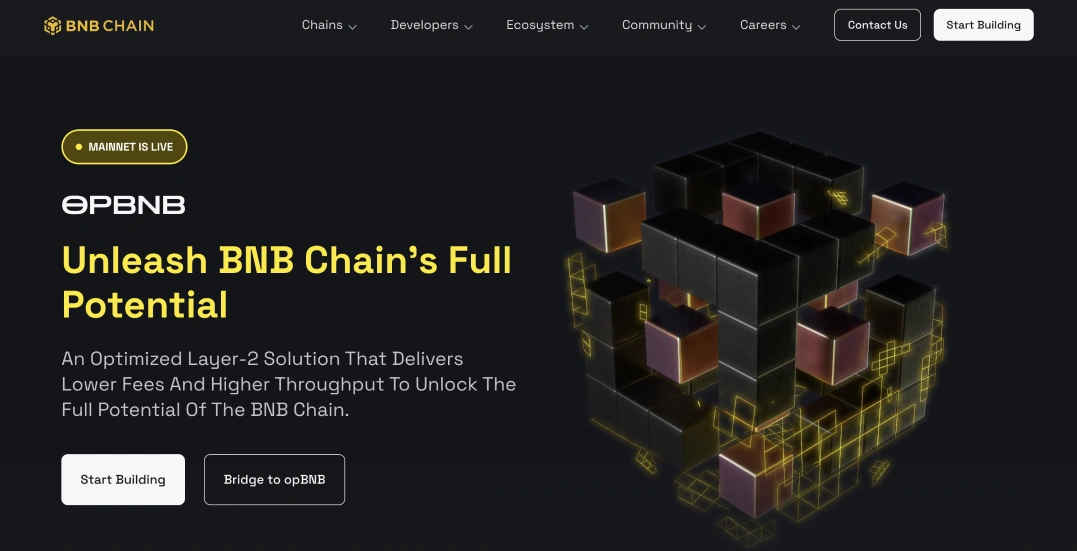How to Bridge to opBNB
%2520(1).webp)
Summary: Bridging to opBNB is quick, secure, and capital-efficient using trusted platforms like Rhino.fi. This app offers transfers from Ethereum, BNB Chain, Arbitrum, Solana and many other networks.
With support for tokens like BNB and USDT, transfers typically take under two minutes and benefit from low fees, thanks to opBNB’s Layer 2 scalability on the BNB Smart Chain.
Rhino.fi is a well-regarded platform offering secure and fast bridging solutions between 17 different EVM networks, backed by industry leaders and boasting user-friendly features in the DeFi space.
Supported Chains
Ethereum, Solana, Base, Arbitrum, TON, Tron + 12 more.
Supported Tokens
ETH, USDC, WBTC, BNB, MATIC, USDT and more.
Security
Audited by PeckShield with an open ImmuneFi bug bounty.
Can I Bridge to opBNB?
Yes, you can bridge assets to opBNB using supported cross-chain bridges. These allow you to transfer tokens like BNB, WETH, USDC, and USDT from networks like Ethereum and BNB Chain. The process integrates with Web3 wallets like MetaMask, and transfers usually take under two minutes, with BNB to opBNB often completing in under a minute.
How to Bridge to opBNB
Bridging to opBNB is best achieved through a trusted and audited bridging protocol like Rhino.fi, which supports over 17 EVM-compatible networks. With over $2 billion in transaction volume, Rhino.fi offers fast and cheap transfers of tokens like BNB, ETH, USDT and more directly to opBNB.
Here’s how to bridge to opBNB using Rhino.fi:
- Connect Your Wallet: Head to Rhino.fi and connect your wallet, like MetaMask.
- Select Networks and Token: Pick the network you're transferring from, choose opBNB as your destination, and select the token you want to bridge.
- Enter Amount and Approve: Enter the amount you want to transfer and approve the transaction.
- Complete the Transfer: Follow the prompts to complete your transfer to opBNB.

What are the Fees?
When transferring assets to opBNB using Rhino.fi, you'll pay a transaction fee of 0.19%. In addition to that, there are gas fees, which can vary depending on network activity at the time of the transfer. Typically, these gas fees are low, but higher network congestion or larger transfers may increase the cost.
opBNB's efficient network design helps minimize gas fees, often keeping them under $1. Rhino.fi remains a cost-effective choice for transferring assets to opBNB, combining affordability with secure, fast transaction processing.
About opBNB
opBNB is a Layer 2 solution for the BNB Smart Chain, built on Optimism's OP Stack. It boosts scalability by handling transactions off-chain and only posting data to the mainnet, which reduces congestion and cuts costs. With Optimistic Rollups, opBNB can process up to 5,000 transactions per second, making it faster and cheaper, especially for DeFi and decentralized apps.
Even though it handles things off-chain, it keeps everything secure by relying on the main BNB Chain for validation. Overall, it's a high-performance, low-cost option for blockchain users.

Bottom Line
In conclusion, bridging to opBNB is a fast, secure, and cost-effective way to transfer assets like BNB and USDT using trusted platforms like Rhino.fi. With minimal fees and quick transaction times, opBNB offers a scalable Layer 2 solution for users looking to take advantage of decentralized applications on the BNB Smart Chain.
%2520(1).webp)
Written by
Tony Kreng
Lead Editor
Tony Kreng, who holds an MBA in Business & Finance, brings over a decade of experience as a financial analyst. At Datawallet, he serves as the lead content editor and fact-checker, dedicated to maintaining the accuracy and trustworthiness of our insights.

.webp)
%2520(1).webp)

.webp)
.webp)




